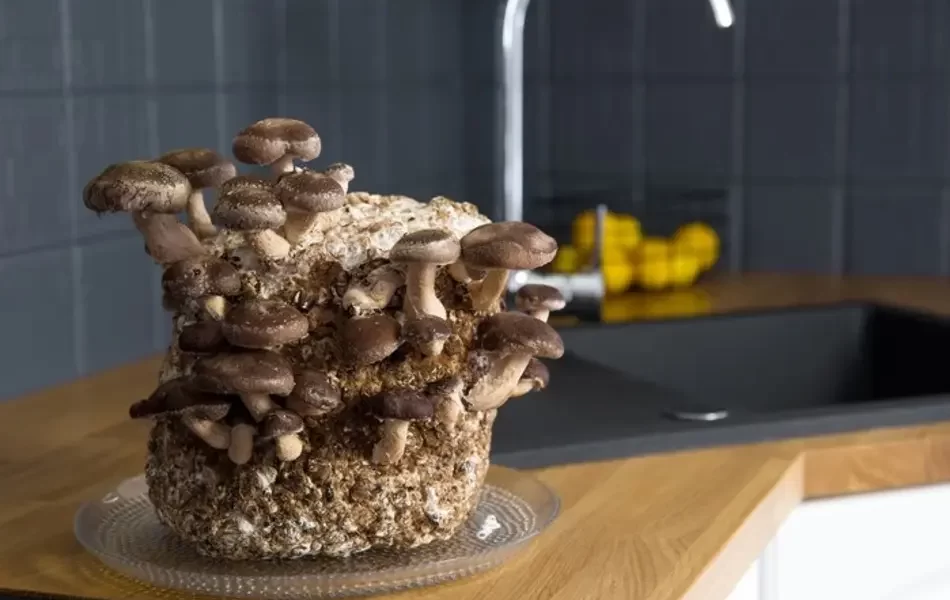Producing your mushroom spawn at home can be rewarding and fulfilling. With the right materials and patience, anyone can cultivate their fungi. The benefits are numerous: fresher mushrooms, cost savings, and the joy of nurturing something from start to finish.
By following the steps outlined in this guide, you’ll be well on your way to creating a healthy mushroom spawn. Troubleshooting is part of the learning process; don’t be discouraged by setbacks. Each attempt will bring new insights into mushroom cultivation.
Creatively about how to use your homemade spawn. Cultivating different varieties can lead to delicious meals or unique gifts for friends and family.
With practice and dedication, you’ll immerse yourself in this fascinating world of mycology.
Benefits of Producing Your Own Mushroom Spawn

Producing your own mushroom spawn opens a world of possibilities. You gain control over the quality and variety of mushrooms you cultivate. This means fresher, tastier yields right at home.
Cost savings are another big benefit. Buying commercial spawns can add up quickly. By making your own, you can significantly reduce expenses while enjoying an ongoing supply.
Mushroom cultivation also fosters sustainability. Creating spawn from local sources minimizes transportation impacts and supports eco-friendly practices.
It allows experimentation with different strains or species that may not be commercially available. Unleash your creativity as you explore unique flavors and textures in your cooking.
Materials Needed for Producing Mushroom Spawn at Home
Creating a mushroom spawn at home requires a few essential materials. First on your list should be high-quality mushroom spores or cultures. These are the foundation of your spawn, so choose wisely.
Next, gather sterilized substrates such as sawdust, straw, or grain. The choice depends on the type of mushrooms you want to grow. Each type has its preference for optimal growth.
You’ll also need containers like jars or bags to hold your substrate and spores during incubation. Ensure they can withstand the heat if you plan to sterilize them.
A pressure cooker or large pot for sterilization purposes. This equipment is crucial to eliminating contaminants hindering your mushroom cultivation process.
Have some alcohol swabs handy for sanitizing surfaces and tools during production. Cleanliness is key in this endeavor; it sets the stage for success in growing those delicious fungi.
Step-by-Step Guide for Producing Mushroom Spawn

To produce mushroom spawn, start by selecting a high-quality mushroom species. Popular choices include oyster and shiitake varieties.
Prepare your substrate, made from materials like straw or sawdust. Sterilize it thoroughly to eliminate any competing organisms. This can be done using a pressure cooker for best results.
Once cooled, inoculate the substrate with spores or mycelium from your chosen mushroom strain. Mix them well but gently to avoid damaging the delicate mycelial threads.
Place the inoculated substrate into clean containers, such as jars or bags. Seal them loosely to allow for airflow while preventing contaminants from entering.
Now comes the incubation phase. Store the containers in a warm, dark place at around 70°F (21°C). Check regularly for signs of growth—white mycelium spreading throughout indicates success!
Troubleshooting Common Issues in Mushroom Spawn Production
Creating a mushroom spawn can be rewarding, but it’s not without challenges. One of the most common issues is contamination. If you notice unusual colors or smells, unwanted fungi or bacteria may have compromised your spawn. Always work in a clean environment and consider using sterile techniques to minimize this risk.
Another issue could arise from inadequate moisture levels. Spawn needs enough humidity to thrive, so if your substrate feels dry, mist it lightly with water. Keep an eye on temperature, too; extremes can hinder mycelium growth.
If colonization seems slow or stagnant, check for adequate airflow. Mycelium requires oxygen to flourish. Ensure that containers are not too tightly sealed and allow air exchange while protecting against contaminants.
Creative Uses for Mushroom Spawn
Mushroom spawn doesn’t just grow mushrooms; it can also serve other fascinating purposes. For instance, you can use it to create eco-friendly packaging materials. Cultivating mycelium around agricultural waste produces biodegradable alternatives that break down naturally.
Another innovative use is in soil health enhancement. Mixing mushroom spawn with compost enriches the nutrient content and boosts microbial activity. This leads to healthier plants and a thriving garden ecosystem.
Artisans have even tapped into mycelium’s potential for crafting sustainable furniture or insulation materials. These unique products are both functional and environmentally friendly.
Integrating mushroom spawn into your home decor by growing edible varieties on logs or jars as living centerpieces. Not only do they look great, but you’ll also enjoy fresh mushrooms right at your fingertips.




